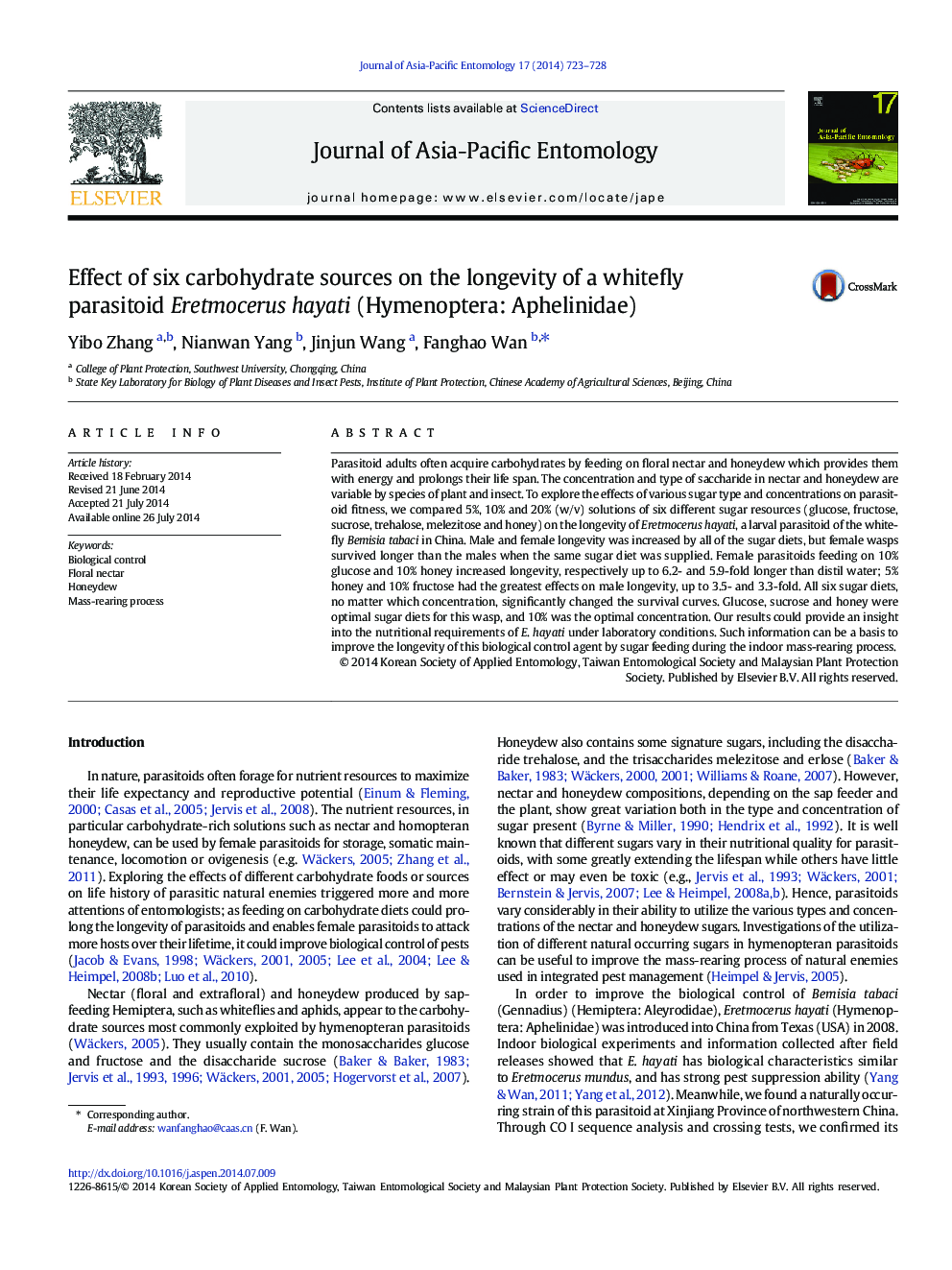| Article ID | Journal | Published Year | Pages | File Type |
|---|---|---|---|---|
| 4524521 | Journal of Asia-Pacific Entomology | 2014 | 6 Pages |
•The life spans of Eretmocerus hayati feeding on six sugar diets had been prolonged.•Glucose, sucrose and honey were optimal sugar diets for this wasp.•10% (w/v) was the optimal concentration.
Parasitoid adults often acquire carbohydrates by feeding on floral nectar and honeydew which provides them with energy and prolongs their life span. The concentration and type of saccharide in nectar and honeydew are variable by species of plant and insect. To explore the effects of various sugar type and concentrations on parasitoid fitness, we compared 5%, 10% and 20% (w/v) solutions of six different sugar resources (glucose, fructose, sucrose, trehalose, melezitose and honey) on the longevity of Eretmocerus hayati, a larval parasitoid of the whitefly Bemisia tabaci in China. Male and female longevity was increased by all of the sugar diets, but female wasps survived longer than the males when the same sugar diet was supplied. Female parasitoids feeding on 10% glucose and 10% honey increased longevity, respectively up to 6.2- and 5.9-fold longer than distil water; 5% honey and 10% fructose had the greatest effects on male longevity, up to 3.5- and 3.3-fold. All six sugar diets, no matter which concentration, significantly changed the survival curves. Glucose, sucrose and honey were optimal sugar diets for this wasp, and 10% was the optimal concentration. Our results could provide an insight into the nutritional requirements of E. hayati under laboratory conditions. Such information can be a basis to improve the longevity of this biological control agent by sugar feeding during the indoor mass-rearing process.
Graphical abstractFigure optionsDownload full-size imageDownload as PowerPoint slide
